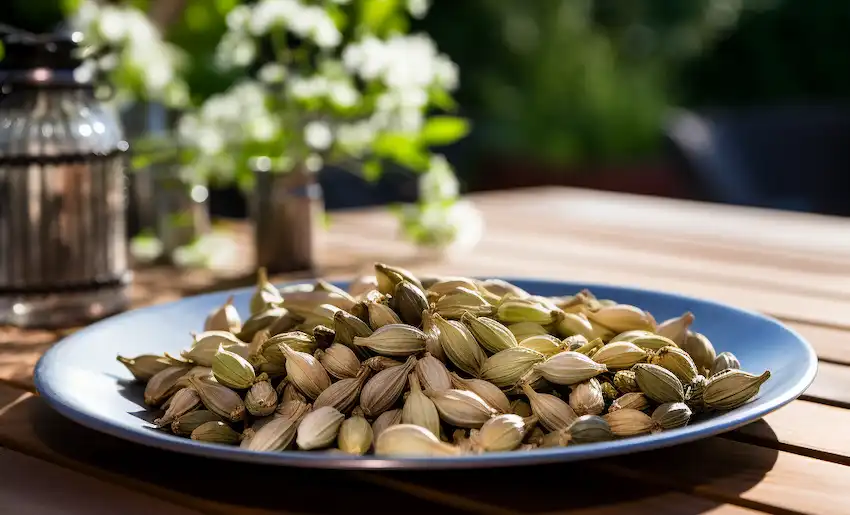Growing Your Own Cardamom: A Guide to Cultivating the “Queen of Spices”
Cardamom, often celebrated as the “Queen of Spices,” is a coveted aromatic ingredient used globally in both culinary and medicinal applications. Native to the Indian subcontinent, this spice flourishes in tropical and subtropical climates. If you’re eager to grow cardamom from seed and ensure its success, this guide is tailored for you.
1. Getting Started with Cardamom Seeds
- Choose Fresh Seeds: Start with plump, viable seeds that show no signs of mold or damage.
- Soak the Seeds: Soak the seeds in water for about 12 hours before planting. This helps soften the seed coat and promotes germination.
2. Planting the Cardamom Seeds
- Prepare the Soil: Cardamom thrives in rich, loamy soil with excellent drainage. A blend of compost, sandy soil, and a bit of perlite or vermiculite will provide an ideal growing medium.
- Planting Depth: Sow the seeds about 1 inch deep in the soil.
- Spacing: Space seeds or seedlings at least 2 feet apart to accommodate the plant’s large growth.
- Watering: Water the seeds gently but thoroughly after planting.
3. Growing Conditions
- Light: Cardamom prefers indirect sunlight or partial shade, mimicking its natural habitat under tree canopies.
- Temperature: Maintain a temperature range of 22°C to 32°C (72°F to 90°F) for optimal growth.
- Watering: These plants thrive in high humidity. Keep the soil consistently moist but avoid waterlogging to prevent root rot.
- Fertilization: Feed the plants with a balanced liquid fertilizer every three weeks during the growing season.
4. Caring for Your Cardamom Plant
- Pruning: Remove weak or unhealthy shoots as they appear to encourage stronger growth.
- Pest Control: Watch for pests like aphids and spider mites. Neem oil is a natural remedy to address these issues.
- Harvesting: Cardamom pods are ready to harvest when they turn a pale green or yellowish-green. Pick them before they split open.
5. Final Tips
- Repotting: If growing cardamom in a pot, repot the plant once it outgrows its container.
- Mulching: Apply a layer of organic mulch to retain soil moisture and suppress weeds.
- Patience: Cardamom is a slow-growing plant. It may take several years before you see flowering and pod production.
In summary, while growing cardamom from seed requires patience and attention, the rewards are well worth the effort. With proper care and the right conditions, you’ll enjoy the pleasure of harvesting your own fresh cardamom pods, complete with the vibrant taste and rich aroma that only home-grown cardamom can provide!

